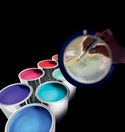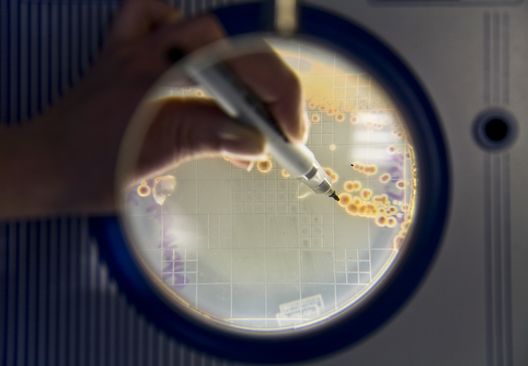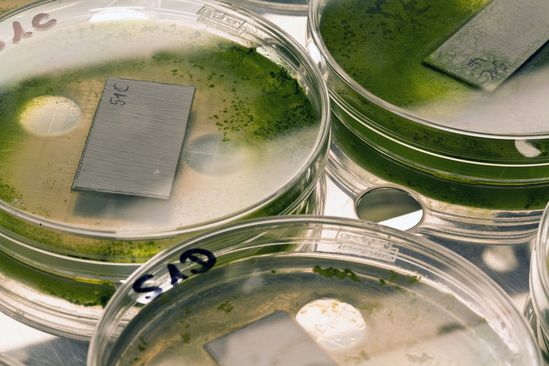2017-03-27
Overcoming new regulatory challenges – using biocides from LANXESS
- LANXESS supports customers to adapt their preservation strategy
- Presentation of the new grades at ECS 2017, Nuremberg, April 4 – 6, Hall 7, Stand No. 7-145
- No labeling of sensitizers (H 317) required
- Reduced leaching
Cologne -
Alongside its colorants and benzyl products, specialty chemicals company LANXESS is showcasing its new product portfolio of biocide formulations at the European Coatings Show (ECS) 2017 in Nuremberg, Germany, from April 4 to 6. The Material Protection Products (MPP) business unit’s product range is focused on being able now and also in the future to meet regulatory and technical challenges in the field of biocides – for example avoiding labeling as a sensitizer – and reducing leaching. Nicolas Gallacier, Global Marketing Director for Industrial Preservation & Coatings in LANXESS’s MPP business unit, states that: “Our regulatory experts are actively involved in association committees and in close contact with the authorities so as to ensure we can help equip our customers for the new legislation. This shows that LANXESS is a competent partner that enables paints and coatings manufacturers to operate successfully on the market.”
Protecting paint
Biocides protect paints while they are in liquid form during storage, but also once they are applied. This prevents attacks by microorganisms such as bacteria, fungi and algae that can lead to unpleasant odors, changes in flow behavior and discoloration. Biocides can avoid these undesired effects by protecting the coating material from being decomposed by microorganisms. This, on the one hand prolongs the shelf life of the paint in the containers and on the other hand maintains the protective function of a coating for as long as possible.
Adapting the preservation strategy using MIT-free formulations
One of the most commonly used in-can preservatives is methylisothiazolinone (MIT). The European Chemicals Agency (ECHA) has proposed lowering the threshold for sensitizer labeling for this active ingredient significantly, from 1000 ppm to 15 ppm. Since effective dosing starts at 50 ppm, products using MIT as a preservative will soon have to be labeled with the hazard statement “H 317” (May cause an allergic skin reaction) and the GHS07 pictogram (exclamation mark). GHS stands for “Globally Harmonized System,” and is an attempt to create a uniform system worldwide for classifying and labeling chemicals. Gallacier says: “We don’t expect the new threshold for labeling MIT as a sensitizing substance to apply before the end of 2018.”
As soon as the new legislation comes into force, it will have significant implications for preserving paints for the DIY market and for professional users. Substances that require an H 317 label will probably only be approved for professional users after that. “We are keeping a close eye on the implementation of the new classification and are supporting our customers in adapting their preservation strategies to the new legislation and offering products free of sensitizing products,” says Gallacier.
MIT-free formulations containing combinations of other isothiazolinones (BIT, CMIT/MIT, OIT) and/or bronopol are already available. LANXESS is also testing combinations with non-sensitizing active ingredients.
Less leaching from the coating
Besides labeling of sensitizers, sustainability is another key issue. Paints and coatings manufacturers face the challenge of continuously having to reduce the leaching of biocides from their products even further.
At the ECS, LANXESS is showcasing a new generation of preservatives, the “Preventol next” series. Preventol next A 29-D and Preventol next A 31-D are fungicide/algicide combinations that have achieved excellent results in the laboratory and in two-year external weathering tests in a damp climate. Their innovative slow-release technology meets industry’s growing demands for low leaching and environmental impact.
Detailed information is available online at www.protectedbylanxess.com.
Forward-Looking Statements
This company release contains certain forward-looking statements, including assumptions, opinions, expectations and views of the company or cited from third party sources. Various known and unknown risks, uncertainties and other factors could cause the actual results, financial position, development or performance of LANXESS AG to differ materially from the estimations expressed or implied herein. LANXESS AG does not guarantee that the assumptions underlying such forward-looking statements are free from errors nor does it accept any responsibility for the future accuracy of the opinions expressed in this presentation or the actual occurrence of the forecast developments. No representation or warranty (expressed or implied) is made as to, and no reliance should be placed on, any information, estimates, targets and opinions, contained herein, and no liability whatsoever is accepted as to any errors, omissions or misstatements contained herein, and accordingly, no representative of LANXESS AG or any of its affiliated companies or any of such person's officers, directors or employees accept any liability whatsoever arising directly or indirectly from the use of this document.
LANXESS is a leading specialty chemicals company with sales of EUR 7.7 billion in 2016 and about 16,700 employees in 25 countries. The company is currently represented at 54 production sites worldwide. The core business of LANXESS is the development, manufacturing and marketing of chemical intermediates, specialty chemicals and plastics. Through ARLANXEO, the joint venture with Saudi Aramco, LANXESS is also a leading supplier of synthetic rubber. LANXESS is listed in the leading sustainability indices Dow Jones Sustainability Index (DJSI World) and FTSE4Good.









